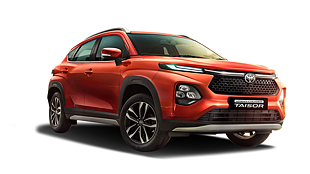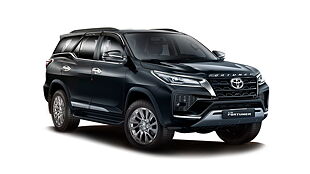What is it?

The petrol version of the successful new-gen Innova that was launched in the Indian market this year. If you are wondering why this variant when there have been only a paltry sum of petrol Innova buyers earlier? Well, this is Toyota's answer to the ban in Delhi-NCR regions on diesel vehicles with more than 2,000cc engine capacity. The petrol model enabled the carmaker to sell the MPV in these regions.
Sure, the ban has been lifted now and the Innova sales have been given the green light, but the petrol Innova still becomes a strong case in point for urban buyers who don’t have much running. As far as looks are concerned, the 2.7 ZX AT is cosmetically exactly identical to its diesel counterpart. So does it make sense? We tested it on performance and fuel efficiency parameters to give you a definitive answer.
How is it on the inside?

This 2.7 ZX seven-seater Innova’s interior is same as one in the 2.8 diesel trim. So the cabin is upmarket, stylish, luxurious and comfortable like its sibling. The new interior is a major transformation over its predecessor and the use of high-grade materials gives the occupants a rich feel irrespective of the seat they are in. The black and dark brown leather upholstery for the seats looks good and the velvet padding on the door panels is nice and soft to touch. Although the design is aesthetically good, the lower half of the dashboard has some parts that feel hard and look cheap for a 20 lakh rupee car. Nevertheless, the seats are comfortable, especially the driver's seat which comes with electronic aids to find you a comfy spot. The second row seats can be reclined and also offer a good thigh support. The third row occupants still sit in a knee up position due to the high floor board. But then, this row offers the same space as the older Innova. So, even if it’s not very generous, it is on par with vehicles in its segment. The large windows and good shoulder room make the cabin feel roomy and airy as well.

This automatic is offered also in the GX variant (seven-seater and eight-seater) apart from this top-end Innova Crysta ZX. The latter offers plenty of storage options and is also the most feature-packed MPV in the market. Features like remote entry system with start-stop button, automatic climate control, semi-digital instrument cluster, multi-function steering wheel, an easy to use seven-inch infotainment system with navigation, and so on have made the list very practical. And to top it all, the safety features are also top notch with seven airbags as standard along with ABS, EBD and BA.
How does it drive?

Now coming to the point why we are doing this review - the heart of the petrol Innova, which is a 2.7-litre four-cylinder dual VVT-i petrol mill. Yes, Toyota decided not to use the globally available 2.0-litre petrol unit, and instead plonked in a larger and more powerful one for the Indian market. This one belts out 163bhp of power and 245Nm of torque. On the transmission front, it comes mated to either a five-speed manual or the six-speed automatic (which we tested).The powerplant is reasonably quiet as compared to the oil-burner. This is understood the moment you start the engine. The petrol is no different. Since it’s a naturally aspirated mill, it’s mostly at high revs and has a conservative redline. So there's no hiding away from the fact that the engine is still audible at high revs, but it’s not as harsh as the clatter of the diesel mill. Then it also has very less vibrations and is refined for most parts.

Like the diesel, this petrol engine also gets two modes - Eco and Power, which can be toggled through two buttons in the cabin. In the Eco mode, the gearbox upshifts fairly quickly. On the other hand, the Power mode allows you to hold the revs till around 5,900rpm before shifting, when the pedal is floored. Seamless might be an exaggeration, but the six-speed gearbox is smooth and continuous for being a torque-converter. There are no jerks while up-shifting or downshifting. Throughout the rev range the engine response is good in both modes and the engine has a linear power delivery. So it feels relaxed but is still not as punchy and quick as the diesel. It does the 0-100kmph sprint in 12.42seconds, a second slower than the 2.8 diesel AT. However, the engine’s flexible nature is evident even with the 7.2 seconds in-gear time in the 20-80kmph in kick down run. Sure there is also a slight delay in down-shifting, but not to the extent that it becomes a point of concern. And if you think you need to quickly downshift while overtaking, then you also have the option of shifting manually. Nevertheless, the generous amount of torque makes sure there is enough of pulling power throughout the rev range and in every gear. Despite the lack of the punch like the diesel, it is good to drive within the city and also cruise on highways at triple-digit speeds.

Toyota has tuned the Innova's suspension according to the Indian road conditions and it makes for a comfortable ride overall. The soft set-up paired with a 176mm of ground clearance helps in tackling broken tarmac at ease. Passengers will feel a side-to-side movement here, but not to the extent that it is uncomfortable. Also, the shimmy is still felt over sharp potholes, which is typical for ladder-on-frame vehicles. Even at high speeds on undulated roads, the vertical oscillations are in check. So overall body control is good. But remember this is a 1790kg vehicle. Its heft can be felt while taking bends as body roll comes into the picture. But thanks to the large footprint and good grip from the 17-inch wheels shod with Bridgestone tyres, corners can still be taken with confidence. The steering feels heavy while manoeuvring but is quite direct and steers the car in the direction it is pointed. We would have loved it to be a little lighter to add to the ease while making a U-turn or parking the vehicle.
Should I buy one?
We didn't mention about the fuel efficiency figures earlier as they are pretty dismal. In fact, this can prove to be a deal breaker. We managed to get around 10.4kmpl on the highway and 7.9kmpl within the city. But we believe the fuel economy criteria can take a back seat for the engine’s higher refinement levels.So if you are looking for a MPV with loads of space, good enough to ferry around six people comfortably and don’t really have a high daily usage, this one makes sense for you. But the biggest barrier can be the high ex-showroom price of Rs 19.62 lakh for this top trim despite being a package with high levels of luxury, refinement and performance. At Rs 1.3-1.4lakh more you can get the punchier diesel with the same features and equipment.

Where does it fit in?
There is no other petrol powered luxury MPV in this price bracket, making it a free run for the Innova. However, at this price point you do get D-segment petrol sedans like the Hyundai Elantra and Skoda Octavia.

Pictures by Kapil Angane
Click here to read our First Drive Review of the Toyota Innova Crysta Diesel
Click here to read our Road test of the Toyota Innova Crysta Diesel

![Toyota Innova Crysta [2016-2020] Exterior Toyota Innova Crysta [2016-2020] Exterior](https://imgd.aeplcdn.com/642x361/cw/ec/25578/Toyota-Innova-Crysta-Petrol-83048.jpg?v=201711021421&wm=1&q=80)
![Toyota Innova Crysta [2016-2020] Exterior Toyota Innova Crysta [2016-2020] Exterior](https://imgd.aeplcdn.com/642x361/cw/ec/25578/Toyota-Innova-Crysta-Exterior-83049.jpg?v=201711021421&wm=1&q=80)
![Toyota Innova Crysta [2016-2020] Exterior Toyota Innova Crysta [2016-2020] Exterior](https://imgd.aeplcdn.com/642x361/cw/ec/25578/Toyota-Innova-Crysta-Exterior-83050.jpg?v=201711021421&wm=1&q=80)
![Toyota Innova Crysta [2016-2020] Exterior Toyota Innova Crysta [2016-2020] Exterior](https://imgd.aeplcdn.com/642x361/cw/ec/25578/Toyota-Innova-Crysta-Petrol-83053.jpg?v=201711021421&wm=1&q=80)
![Toyota Innova Crysta [2016-2020] Exterior Toyota Innova Crysta [2016-2020] Exterior](https://imgd.aeplcdn.com/642x361/cw/ec/25578/Toyota-Exterior-83054.jpg?v=201711021421&wm=1&q=80)
![Toyota Innova Crysta [2016-2020] Exterior Toyota Innova Crysta [2016-2020] Exterior](https://imgd.aeplcdn.com/642x361/cw/ec/25578/Toyota-Exterior-83057.jpg?v=201711021421&wm=1&q=80)
![Toyota Innova Crysta [2016-2020] Exterior Toyota Innova Crysta [2016-2020] Exterior](https://imgd.aeplcdn.com/642x361/cw/ec/25578/Toyota-Exterior-83059.jpg?v=201711021421&wm=1&q=80)
![Toyota Innova Crysta [2016-2020] Interior Toyota Innova Crysta [2016-2020] Interior](https://imgd.aeplcdn.com/642x361/cw/ec/25578/Toyota-Interior-83055.jpg?v=201711021421&wm=1&q=80)
![Toyota Innova Crysta [2016-2020] Image Toyota Innova Crysta [2016-2020] Image](https://imgd.aeplcdn.com/272x153/n/cw/ec/20623/innova-crysta-exterior-right-front-three-quarter.jpeg?q=80)
























